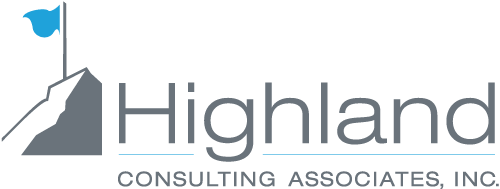The Power of the PENsion: LDI in 2023 – Batten Down the Hatches

As we look back on the economic volatility of 2022 and face a possible recession in 2023, pension plan sponsors could be unnerved. Consider where we find ourselves at the close of 2022:
- Inflation remains at 40-year highs. Although the annual inflation rate slowed again in November to 7.1% (the lowest level since December 2021), prices increased 13.8% from January 2021 to October 2022, costing the average American household $747 in October alone.[i]
- The Federal Reserve has raised rates in seven straight meetings, something it hasn’t done since 2005. In four consecutive meetings earlier this year, the Fed has raised interest rates by 75 bps to a range of 3.75-4.00%.[ii] On December 14, the Fed announced another 50-basis point increase.
- Stock prices, responding to inflation highs and rate increases, have declined in 2022, and retreated to bear market territory in June.
Add to these dreary measures:
- There’s a near 2-in-3 chance (65%) that the U.S. economy could contract within the next 12 to 18 months, according to economists polled for Bankrate’s Third-Quarter Economic Indicator.[iii]
It’s been a difficult year, and we’ve few reasons to expect smooth sailing in 2023. But the economic challenges around us shouldn’t shake the resolve of sponsors implementing a properly designed liability-driven investment (LDI) strategy.
It could be an opportune time for pension plans utilizing an LDI approach for many reasons. The best way to determine that is through a review of the LDI strategy. Does it still align with company objectives in the current environment, or do these conditions call for some fine tuning?
LDI Portfolios – Steady On
While plan sponsors have seen hand-wringing returns in their equity and fixed income investments, interest rate increases, for many plans, have contributed to funded status gains in 2022. For these plans, the decreased value of plan liabilities has more than offset investment losses to further stabilize them.
In fact, the funded status of the 100 largest corporate defined benefit pension plans posted their largest monthly increase for the year in October.[iv] Which is precisely what a properly designed LDI strategy and overall investment program can deliver. A holistic approach will consider and have mechanisms to respond quickly to three risk factors, always at play and subject to swings—even volatile ones:
Interest Rate Risk. Interest rate volatility is the primary risk in pension plans, but the liability-hedging portfolio can be structured to decrease the funded status volatility that interest rate swings can affect. Insulation comes from creating a bond portfolio that mimics the movement of the liabilities. This can be accomplished by matching the duration of the available bonds to that of the liabilities.
In the case of poorly funded plans, a better hedge can be achieved by extending the duration beyond the liability duration; however, this creates something called “key rate risk” at the long end of the yield curve. For example, let’s assume a bond portfolio has a duration of 12 years, and the liabilities have a duration of 10 years. If everything else holds constant, for every 1% decrease in interest rates, the asset portfolio increases by 12% while the liabilities only increase by 10%. A favorable outcome, no doubt. But the reverse is also true. If interest rates rise by 1%, then the same bond portfolio will decline by 12% while the liabilities only increase by 10%.
Credit Risk. Though interest rates may be the primary risk for pension plans, plan sponsors must also consider credit risk. Very often the liability-hedging portfolio will be exclusively invested in long corporate bonds. The reason is simple: the statutory discount rate is derived from the AA corporate bond yield curve.
Ideally, the credit quality of both the portfolio and discount rate should be similar, but it’s not possible to invest in AA quality bonds in any meaningful quantity that provides proper diversification. As a result, most corporate bond investment managers are assigned a benchmark so that a majority of the available bonds are rated BBB.
The best way to raise the credit quality of the bond portfolio to match the discount rate is to invest a portion of the available assets in long-duration U.S. Treasury bonds. There are additional benefits to using these bonds. First, liability-hedging portfolios historically have exhibited better downside protection than a plan that is 100% tied to the business cycle using only corporate bonds. Second, a portfolio comprised of only long-duration U.S. Treasury bonds can be implemented passively, thereby lowering the total asset management fees of the plan.
Yield Curve Risk. Lastly, plan sponsors seeking greater precision in their liability-hedging portfolio will want to consider investing the portfolio in proportion to liabilities at various duration buckets along the entire yield curve. While this is the least important risk associated with managing a pension plan, it’s also the most complex to implement. For this reason, many plan sponsors forgo the option and instead rely on managing interest rate and credit risk only.
Recognizing these risk types is a start, but only a start. Charting your response to “what-if scenarios” is the necessary next step. Pension plan guidelines, or policy prescriptions, must be documented, reviewed regularly, and amended to help safeguard the plan when the markets become turbulent.
What’s Next?
To date,higher interest rates have provided some relief with respect to increasing liabilities, and some plans are enjoying improvement in their funded status. However, we’ve also witnessed higher interest rates reducing the value of the LDI portfolio and putting downward pressure on risk assets, like equities. In addition, higher interest rates are likely to constrict business cash flows as companies with debt direct more cash to increasing debt service requirements. This could lead to corporate bond downgrades and even defaults. There’s plenty of risk on the horizon, but none to be panicked by.
So what should pension plan sponsors do as we look to 2023? Here’s a start:
- Know your exposures, think opportunistically and act when appropriate. De-risk the portfolio if risk assets present more favorable valuations. For some plans, that time is now.
- Monitor lower-quality bond portfolios for any signs of stress. Pension discount rates are determined by using AA bond yields while most LDI portfolios contain significant allocations to bonds with lower quality bonds.
- Consider U.S. Treasuries to better align the credit quality of the LDI portfolio with the discount rate.
- Consider the desired level of hedging against the backdrop of higher (and increasing) interest rates.
In rapidly changing environments, plan sponsors need to be agile to protect their investment programs from uncompensated risk, and seize opportunities that may be fleeting. A strategically sound plan will have accounted for a range of possible market fluctuations with appropriate response mechanisms. Nonetheless, today’s economic stresses invite a review of current strategies. Certain adjustments may be especially helpful now. For example, some organizations may need to re-evaluate cumbersome governance structures or ways to alleviate the decision-making anxiety and delayed response of an (understandably) uneasy investment committee.
As Investor Advocates®, Highland isn’t caught off guard by market volatility. Highland recognizes that we can’t prevent economic storms, but we can learn to ride them out. For those who learn to do that, storms aren’t a problem, this year or next.
Call on Highland
As you consider your pension plan liabilities in a time of significant economic change and challenge, please call on us. Our team can guide you so that your LDI strategy is designed to weather the storm.
Contact Mike Paolucci at 440.808.1500.
[i] https://www.jec.senate.gov/public/index.cfm/republicans/2022/12/state-inflation-tracker-november-2022#:~:text=You%20can%20find%20our%20full,household%20%24747%20last%20month%20alone.
[ii]https://www.federalreserve.gov/newsevents/pressreleases/monetary20221102a1.htm#:~:text=The%20Board%20of%20Governors%20of,%2C%20effective%20November%203%2C%202022.
[iii] https://www.bankrate.com/banking/federal-reserve/economic-indicator-survey-recession-risks-october-2022/
[iv] https://www.milliman.com/en/insight/Pension-Funding-Index-November-2022#:~:text=The%20funded%20status%20of%20the,Pension%20Funding%20Index%20(PFI).
Highland Consulting Associates, Inc. was founded in 1993 with the conviction that companies and individuals could be better served with integrity, impartiality, and stewardship. Today, Highland is 100% owned by a team of owner-associates galvanized around this promise: As your Investor Advocates®, we are Client First. Every Opportunity. Every Interaction.
Highland Consulting Associates, Inc. is a registered investment adviser. Information presented is for educational purposes only and does not intend to make an offer of solicitation for the sale or purchase of specific securities, investments, or investment strategies. Investments involve risk and unless otherwise stated, are not guaranteed. Be sure to first consult with a qualified financial adviser and/or tax professional before implementing any strategy discussed herein. Past performance is not indicative of future performance.



